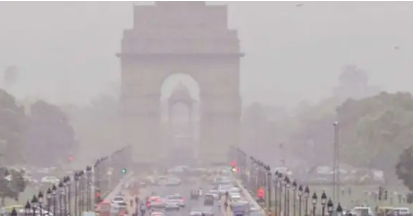


At seven in the morning on Friday, a layer of haze persisted over Delhi, with several areas of the city recording “severe” air quality. The Central Pollution Control Board (CPCB) recorded data at 8 am, showing that the air quality in RK Puram was 461; at New Moti Bagh, it was 454; at the IGI Airport area, it was 465; and at Nehru Nagar, it was 475, all falling into the severe category. The Central Pollution Control Board (CPCB) reported that on Wednesday, the air quality in RK Puram was measured at 420, while it was in the severe category at 408 at New Moti Bagh, 404 near the IGI Airport, and 433 at Nehru Nagar.
The city was engulfed in a thick layer of smog on the night of Diwali and the toxic haze continued the next day following the bursting of firecrackers, despite the Supreme Court order.
Nine out of 11 state capitals analysed in India recorded higher pollution in the first 12 hours after Diwali celebrations this year as compared to last year. The government’s National Clean Air Programme (NCAP) tracker analysed PM 2.5 (fine particulate matter) data for 11 capital cities. The highest spike (recorded at 15-minute intervals) was seen in the national capital Delhi. It was 999.5 ug/m3 at Pusa on November 13 at 1:30 am.
The NCAP Tracker is a joint project by Climate Trends and Respirer Living Sciences to create an online hub for the latest updates on India’s clean air policy, the National Clean Air Programme (NCAP). The data was sourced from the Continuous Ambient Air Quality Monitoring Stations (CAAQMS) of the Central Pollution Control Board (CPCB).